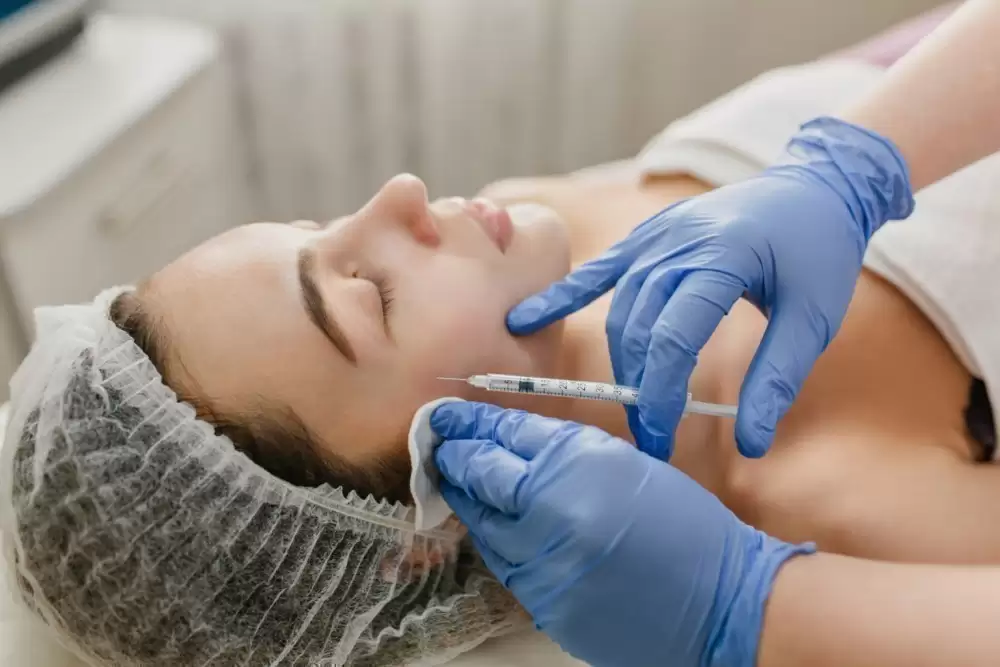What are the symptoms of rosacea?
Rosacea is a chronic skin condition characterized by several symptoms, which can vary in severity. Common symptoms include:
- Facial Redness: Persistent redness or flushing, particularly on the central face, including the cheeks, nose, and forehead.
- Visible Blood Vessels: Small, dilated blood vessels (telangiectasia) that become more apparent on the skin.
- Bumps and Pimples: Acne-like breakouts or small, red bumps and pustules, often mistaken for acne.
- Thickened Skin: In some cases, the skin may thicken, particularly around the nose (rhinophyma), giving it a swollen appearance.
- Dryness and Sensitivity: The affected skin may feel dry, itchy, or sensitive, and can sometimes be prone to burning or stinging sensations.
- Eye Irritation: Ocular rosacea can cause red, dry, or irritated eyes and may lead to conditions like conjunctivitis or blepharitis.
Symptoms can be triggered or worsened by various factors such as heat, spicy foods, alcohol, stress, and certain skincare products.
What are the causes of rosacea?
The exact cause of rosacea is not fully understood, but several factors are believed to contribute to its development:
- Genetic Predisposition: A family history of rosacea or other skin conditions can increase the likelihood of developing rosacea.
- Immune System Factors: Abnormal immune responses may contribute to inflammation and the symptoms of rosacea.
- Skin Barrier Dysfunction: Impaired skin barrier function can make the skin more sensitive and prone to rosacea symptoms.
- Blood Vessel Abnormalities: Abnormalities in blood vessel function or structure may lead to the flushing and visible blood vessels associated with rosacea.
- Microbial Factors: Certain bacteria, such as Demodex mites that live on the skin, or other microorganisms, may play a role in triggering or exacerbating rosacea.
- Environmental Triggers: Factors such as sun exposure, extreme temperatures, wind, and pollution can aggravate rosacea symptoms.
- Diet and Lifestyle: Spicy foods, alcohol, and hot beverages are known to trigger rosacea flare-ups in some individuals.
- Hormonal Changes: Hormonal fluctuations, particularly in women, may influence the onset or worsening of rosacea.
Understanding the specific triggers and underlying factors in an individual can help manage and treat rosacea more effectively.
What is the treatment for rosacea?
Treatment for rosacea typically involves a mix of lifestyle changes, medications, and sometimes laser therapy. To manage rosacea, your approach may vary depending on the severity and type of symptoms.
Topical treatments often include antibiotics like clindamycin or metronidazole to reduce inflammation and control bacteria, and azelaic acid to help with redness and bumps. For some, topical brimonidine may be used to reduce redness by constricting blood vessels.
Oral medications can also be prescribed. Oral antibiotics such as doxycycline or minocycline are used for more severe cases to address inflammation, while oral isotretinoin might be considered in very severe cases to reduce oil production and inflammation.
Laser and light therapies can be effective for reducing redness and visible blood vessels. Laser therapy and intense pulsed light (IPL) are commonly used treatments.
In addition to medical treatments, skincare and lifestyle adjustments are important. Using gentle, non-irritating cleansers and fragrance-free moisturizers helps maintain skin hydration and barrier function. Regular application of broad-spectrum sunscreen with SPF 30 or higher protects against sun exposure, and identifying and avoiding personal triggers like spicy foods, alcohol, and extreme temperatures can help manage symptoms.
For those with eye symptoms related to rosacea, lubricating eye drops or antibiotics might be needed. Consulting with a dermatologist is crucial for personalized treatment and effective management of rosacea.

Leave a Reply
You must be logged in to post a comment.